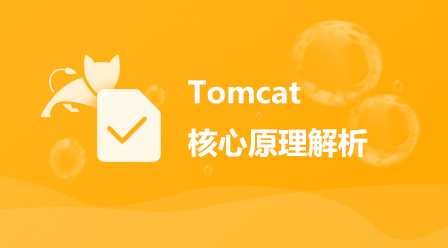
Course Intermediate 4118
Course Introduction:Tomcat is a Servlet container developed by the Jakarta project under the Apache Software Foundation. According to the technical specifications provided by Sun Microsystems, it implements support for Servlets and JavaServer Page (JSP), and provides some unique functions as a Web server, such as Tomcat Management and control platform, security bureau management and Tomcat valve, etc.

Course Intermediate 5775
Course Introduction:JSON is a universal lightweight data storage and exchange format that is independent of programming languages. It is written based on JavaScript object syntax and is very suitable for Web development. Ajax is an asynchronous data loading technology that allows users to obtain data without leaving the current page. The user experience is excellent. This course combines json and ajax technologies to demonstrate the application scenarios of these two technologies with examples (the knowledge of php and mysql involved can be temporarily neglect)

Course Elementary 12464
Course Introduction:"Ajax Principles Detailed Video Tutorial" The core of Ajax is the XMLHttpRequest object, referred to as XHR. It is used to enable the browser to request additional data from the server without unloading the page, which greatly improves the user experience. Prior to this, this technology actually existed and was implemented by some people, but it was not popular and was not supported by browsers. However, after that, IE5 introduced XHR objects for the first time and supported ajax technology, which was subsequently supported by all browsers.
laravel eloquent implementation principle
laravel eloquent implementation principle
2017-05-16 16:56:22 0 4 751
Teaching management source code login problem
2018-10-15 00:08:02 0 4 1185

Course Introduction:Detailed explanation of JVM principles: In-depth exploration of the working principle of the Java virtual machine requires specific code examples 1. Introduction With the rapid development and widespread application of the Java programming language, the Java Virtual Machine (JavaVirtualMachine, referred to as JVM) has also become indispensable in software development. a part of. As the running environment for Java programs, JVM can provide cross-platform features, allowing Java programs to run on different operating systems. In this article, we will delve into how the JVM works
2024-02-18 comment 0 990

Course Introduction:An introduction to the analysis of the functions and principles of the JVM virtual machine: The JVM (JavaVirtualMachine) virtual machine is one of the core components of the Java programming language, and it is one of the biggest selling points of Java. The role of the JVM is to compile Java source code into bytecodes and be responsible for executing these bytecodes. This article will introduce the role of JVM and how it works, and provide some code examples to help readers understand better. Function: The main function of JVM is to solve the problem of portability of Java programs on different platforms.
2024-02-22 comment 0 684

Course Introduction:JVM principle analysis: In-depth exploration of the working principle of the Java virtual machine requires specific code examples. Introduction: The Java Virtual Machine (JavaVirtualMachine, referred to as JVM) is the basic environment for running Java programs and is responsible for interpreting and executing Java bytecodes. Understanding how the JVM works is crucial to developing efficient and stable Java applications. This article will delve into the working principle of the JVM through specific code examples. 1. Overview of JVM JVM is the basis for running Java programs.
2024-02-19 comment 0 859